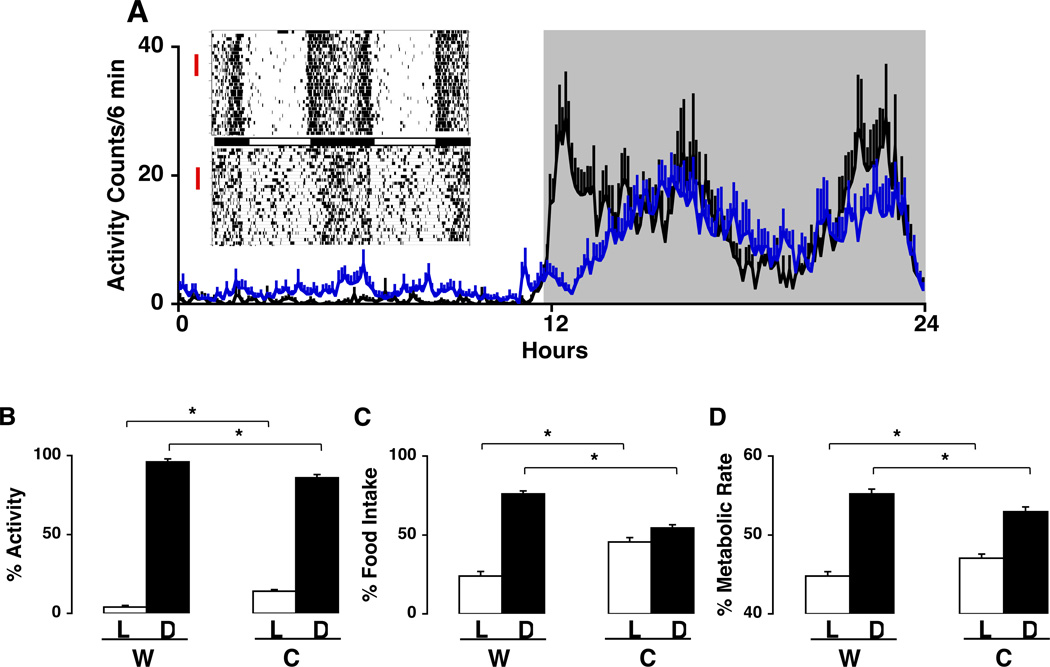Fig. 1.
Altered diurnal rhythms in locomotor activity, feeding and metabolic rate in Clock mutant mice. (A) Insert on left: Actograms showing locomotor activity over a 30 day period in representative adult wild-type (WT) (top) and Clock mutant (bottom) mice individually housed in 12:12 LD (at 23°C) and provided food and water ad libitum. Activity bouts were analyzed using ClockLab software in 6-minute intervals across 7 days of recording (selected days are indicated by red vertical lines to the left of the actograms). Shown over the 24 hr cycle are activity counts during light (unshaded) and dark (shaded) periods (WT, n=5, black line; Clock, n=9, blue line). (B) Diurnal rhythm of locomotor activity for mice shown in (A). Activity counts were accumulated over the 12-hour light and 12-hour dark periods and expressed in each period as a percent of total 24-hour activity (*, p<0.05). Total activity over the 24-hour period was similar between genotypes. (C) Diurnal rhythm of food intake. Different groups of adult WT (N=7) and Clock mutant (N=5) mice were maintained on a regular diet (10% kcal/fat) and food intake (g) was measured during light and dark periods. Results shown are average food intake during light and dark periods as a percentage of total food intake (*, p<0.001).
(D) Diurnal rhythm of metabolic rate. Metabolic rate was determined in additional groups of WT (N=7) and Clock mutant (N=9) mice by indirect calorimetry under 12:12 LD conditions over a 3 day continuous monitoring period (*, p<0.05). Results shown are average metabolic rates during the light and dark periods as a percentage of total metabolic rate. Results shown (A–D) are expressed as group means ± SEM.

